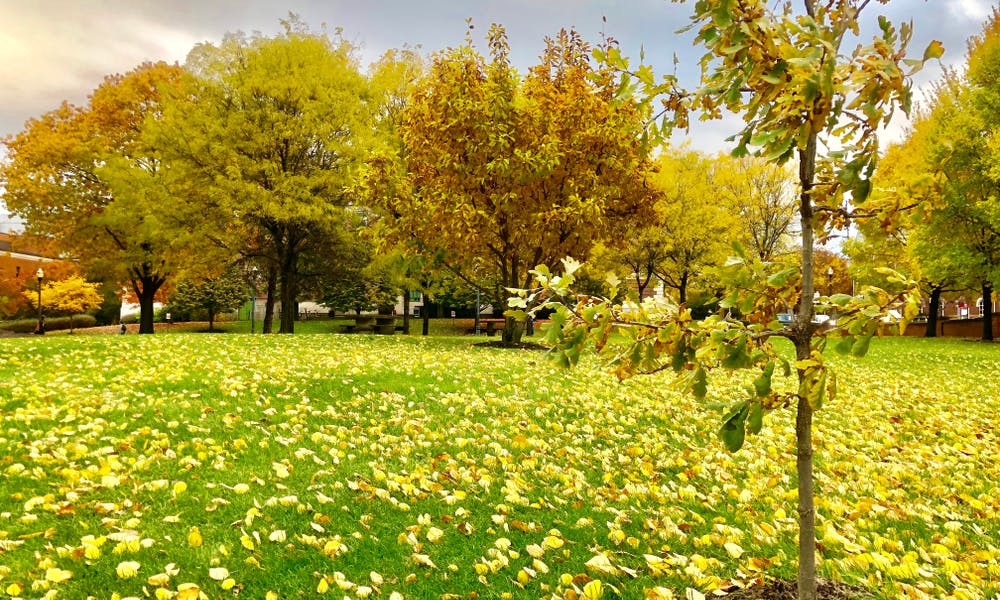For more than one century, the red carnation has been Ohio’s state flower. It is a plant native to Eurasia with a long history, starting with the Romans and Greeks. It is a beautiful perennial flower and is an extremely popular flower as decoration for special events, such as weddings and proms.
They have strong symbols used in arts and literature, expressing messages that were developed during many millennia. Moreover, carnations can keep blooming throughout the entire season if you remove the spent flowers and, additionally, their flowers last for a long time when they are cut. Let’s go through the next sections to find out more details about:
* Origins and etymology of Ohio state flower
* Characteristics of carnations
* How did the red carnation become Ohio’s symbol?
* The history of Ohio’s symbol
* A few facts about red carnations
* How to grow and care for Ohio’s symbol
Origins and Etymology of Ohio State Flower
The Ohio state flower has a long, rich history that starts with the Greeks, who used the beautiful red flower as a decoration. Today, the red carnation is known as Dianthus caryophyllus. It was adopted as the state flower in Ohio in 1904, commemorating President William McKinley, who always had this flower in the lapel. He, of course, was from Ohio.
Some people argue that the word “carnation” comes from the fact that this beautiful pinkish flower was used by Greeks in ceremonial crowns, more than two millennia ago. Others suggest that the Latin word “carnis” which means “flesh” is the source of its name, primarily because early carnations were pink, resembling the color of flesh.
Characteristics of Carnations
The Ohio State flower, or the red carnation, has double flowers with a strong fragrance. The most popular colors include white, red and pink; the white flowers are often dyed to create variety.
The red carnation is a perennial plant that can grow up to 2 feet tall and it is amongst the most popular cut flower.
How Did the Red Carnation Become Ohio’s Symbol?
In 1901, President William McKinley was assassinated and, only three years later, the flower became Ohio’s symbol in his memory. It is unclear why he was fond of this flower; some argue that it is a symbol of good luck, others believe that it symbolizes respect, love, and reverence.
Since 1904, the red carnation is the symbol of Ohio. It is used by the Ohio State University in fields that celebrate their colors, while Alliance, Ohio has a carnation festival that celebrates the history and roots of the state.
The History of Ohio’s Symbol
More than 2,000 years of history narrate different stories, myths, and legends about Dianthus caryophyllus. For instance, some associate it with the goddess of hunting, Diana, who was coming back from un unfruitful hunting session. She came across a shepherd playing music on his flute and she blamed him for being unsuccessful. Diana’s rage at the shepherd made her attack him and take out his eyes. Later, she regretted her behavior; where the shepherd’s eyes fell, carnations sprouted symbolizing his spilled blood.
Another Christian legend claims that carnations symbolize Virgin Mary’s tears when she was watching her son, Jesus, carrying the cross. This gives the flower the symbol of motherly love, making them for mothers and daughters.
Nowadays, white carnations are worn in the Netherlands; they symbolize the remembrance of the country’s resistance during World War II. These flowers are worn by the citizens as a sign of respect towards the veterans.
On the opposite end of the spectrum, purple carnations are popular in France as a funeral flower.
A Few Facts About Red Carnations
Some claim that the red carnations are the most popular cut flower, coming second after the rose. It is also one of the oldest and most cultivated flowers due to its powerful fragrance. The plant blooms for a long period of time, making it the perfect choice for art and decorations.
A lighter carnation shows admiration when offered to someone, while deeper red expresses affection and even love.
This fact might not be as popular, but carnations have a long history of being brewed into tea. They are known as stress suppressants and restoring one’s energy. Carnation tea was also used for stomach aches and fever. What is more, carnations are frequently used in cosmetics and beauty products that moisturize skin, treat skin ailments and can even minimize wrinkles.
Furthermore, these beautiful flowers are a symbol of Mother‘s Day and they are often present in many formal events, such as weddings and proms.
How to Grow and Care for Ohio’s Symbol
Most carnations can be grown from cuttings from the plant’s base. These sections can be cut whenever you wish, as long as it is during winter or fall. Then, you need to root it in the sand and place it in a pot until spring. April is usually the best month for planting carnations in soil, but it depends on when the ground is ready.
Carnations love soil that is sandy, deep, and friable. Carnations enjoy the sun, so you should ensure that they have access to at least a few hours in the sun each day. The plant requires plenty of watering so that it is always moist. If the foliage becomes yellow, this means that you are overwatering the plant.
If you want your carnation to keep blooming, make sure you remove the wilted flowers. The plant then continues blooming. The better the quality of the soil and irrigation, the better the blooms look and last for longer.
To sum up, the Ohio state flower is the red carnation. It has a rich history rooted in Greek and Roman legends. It has been a symbol of the state for more than one century and it is the ideal present for mothers.
